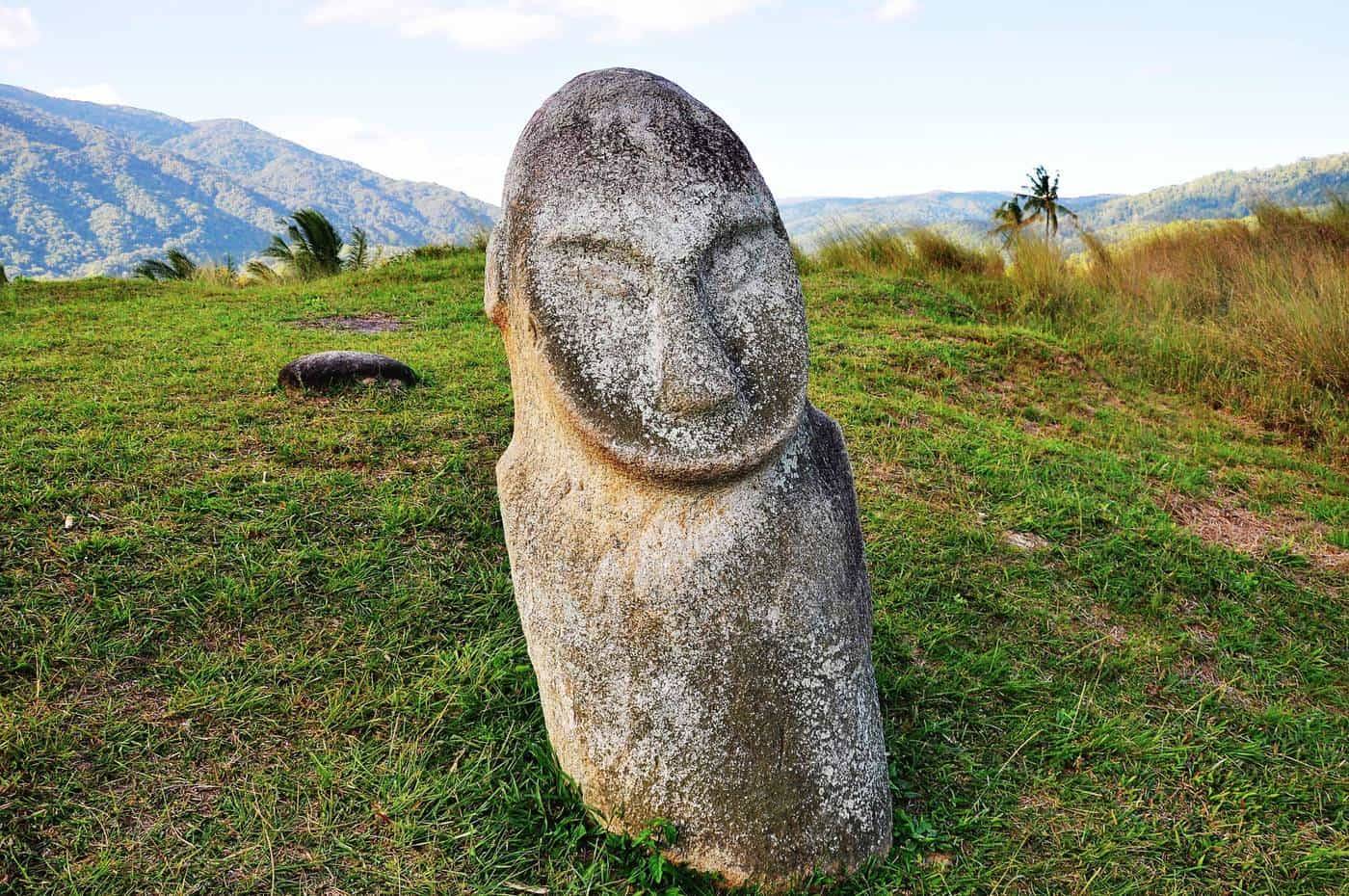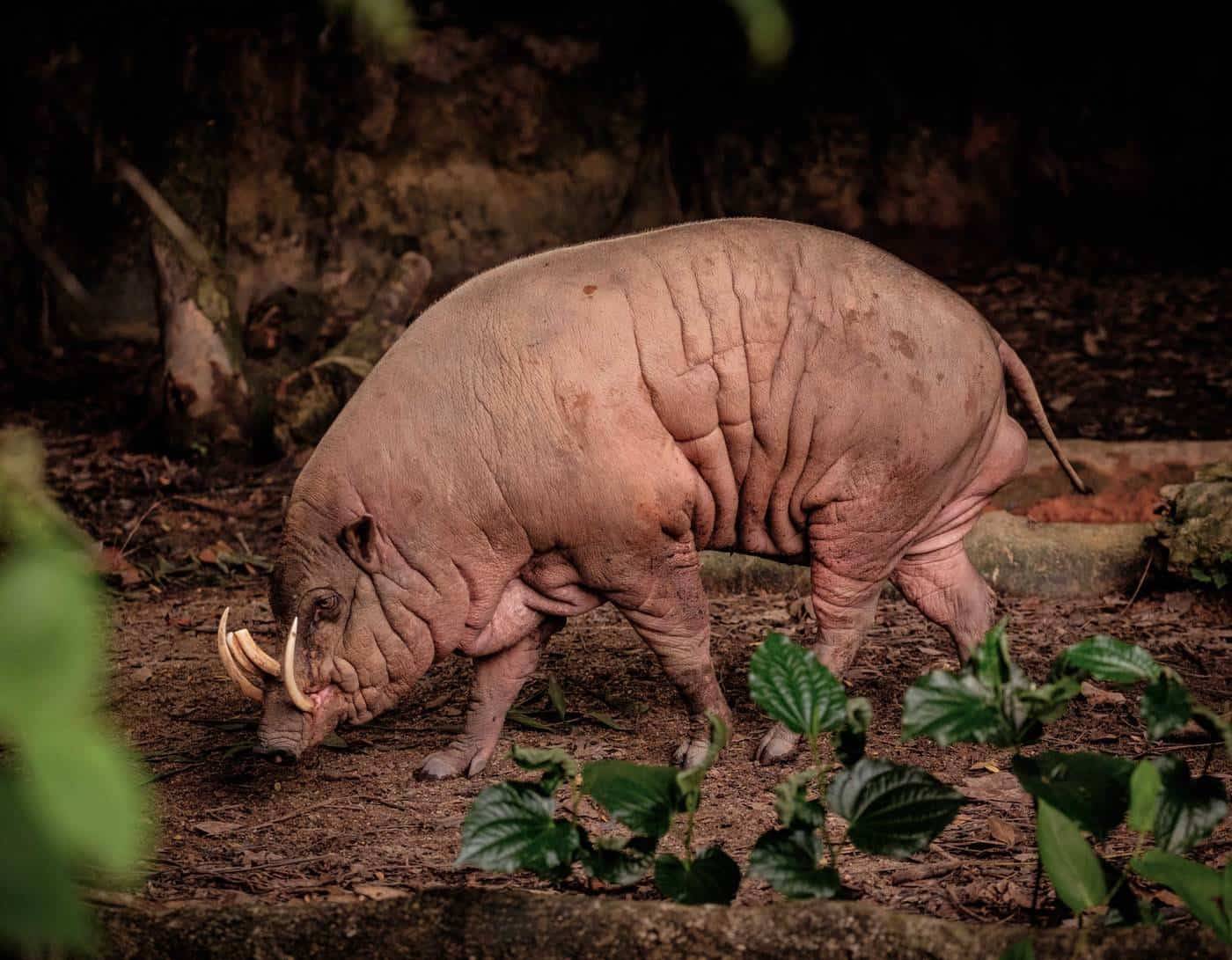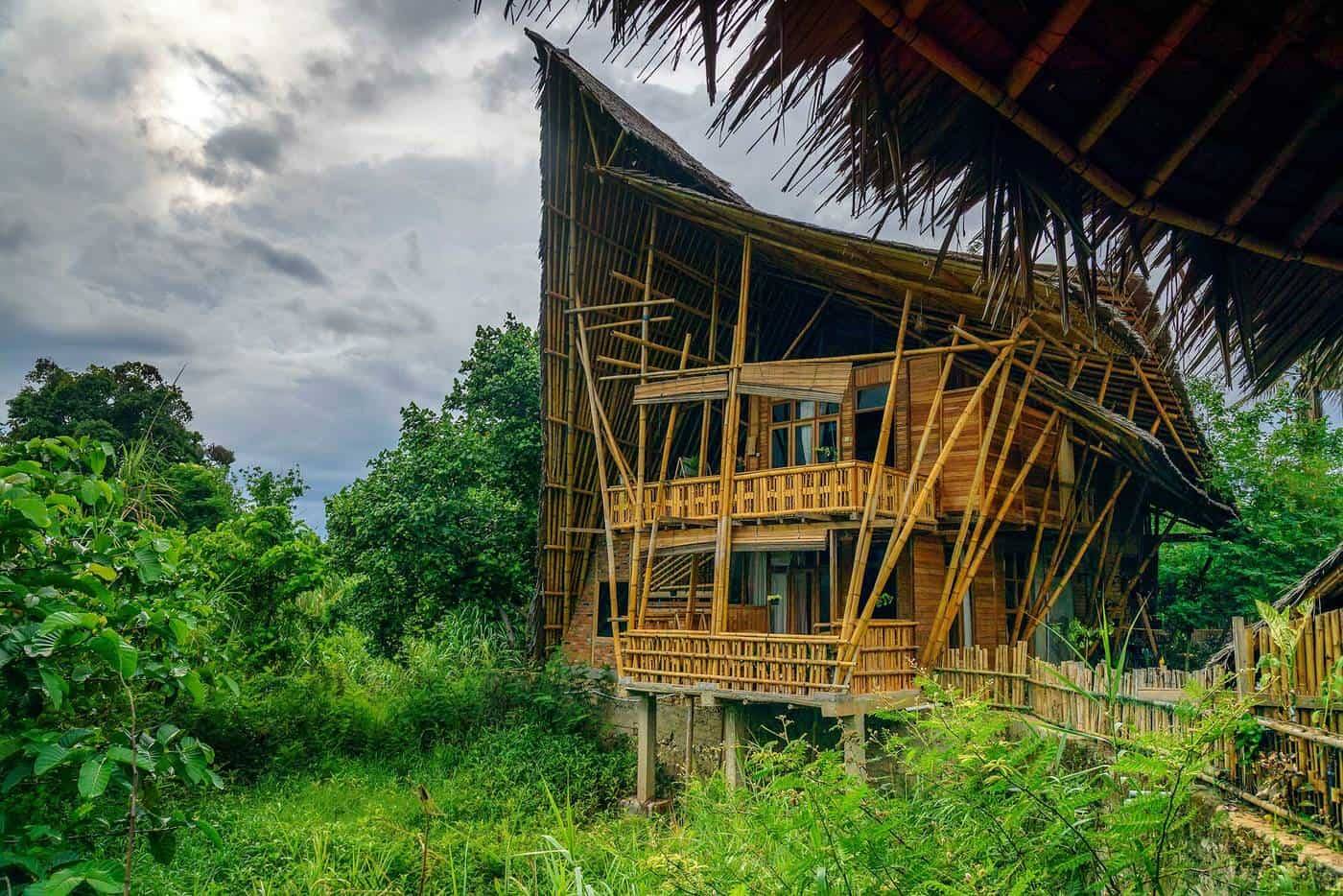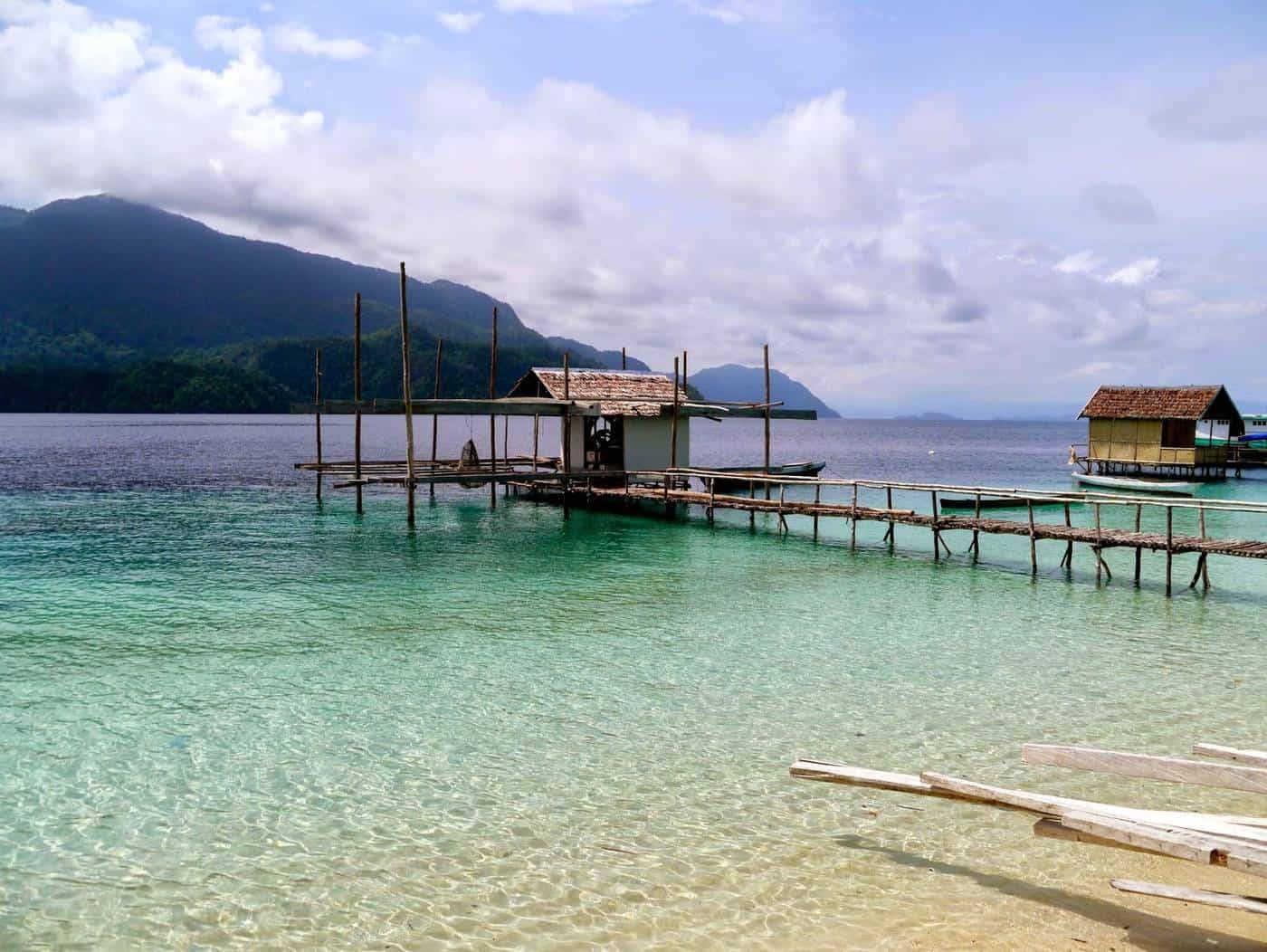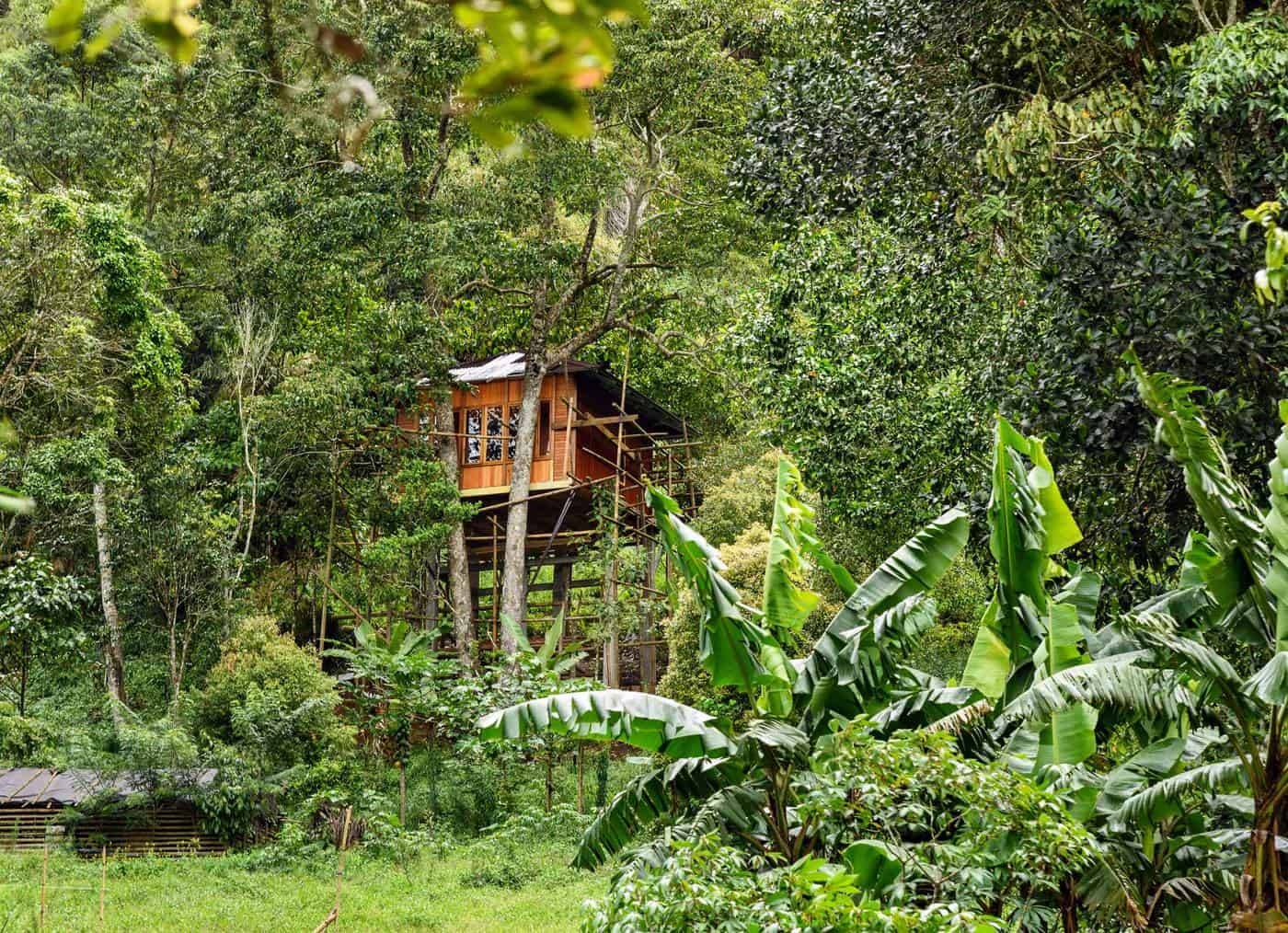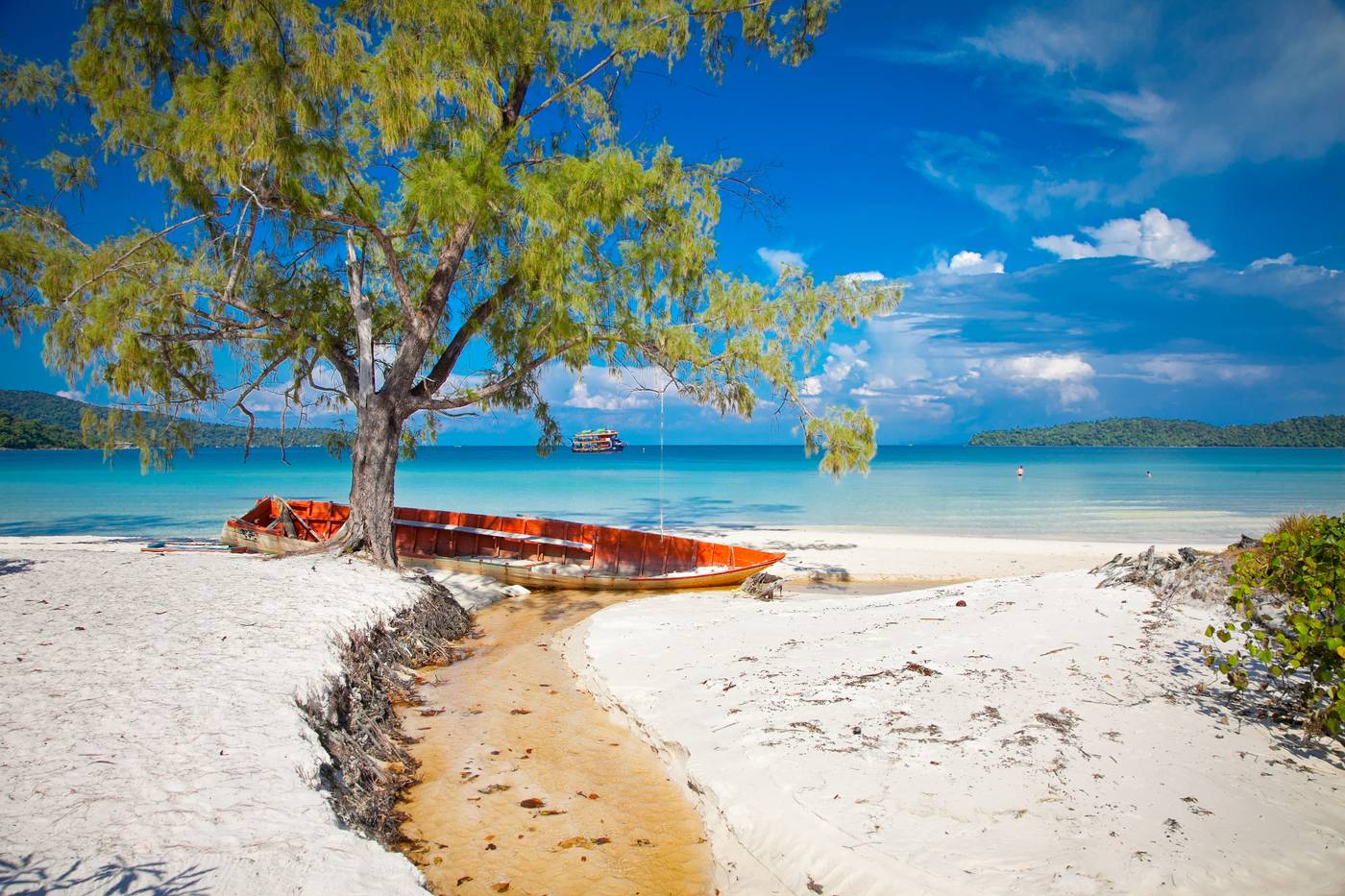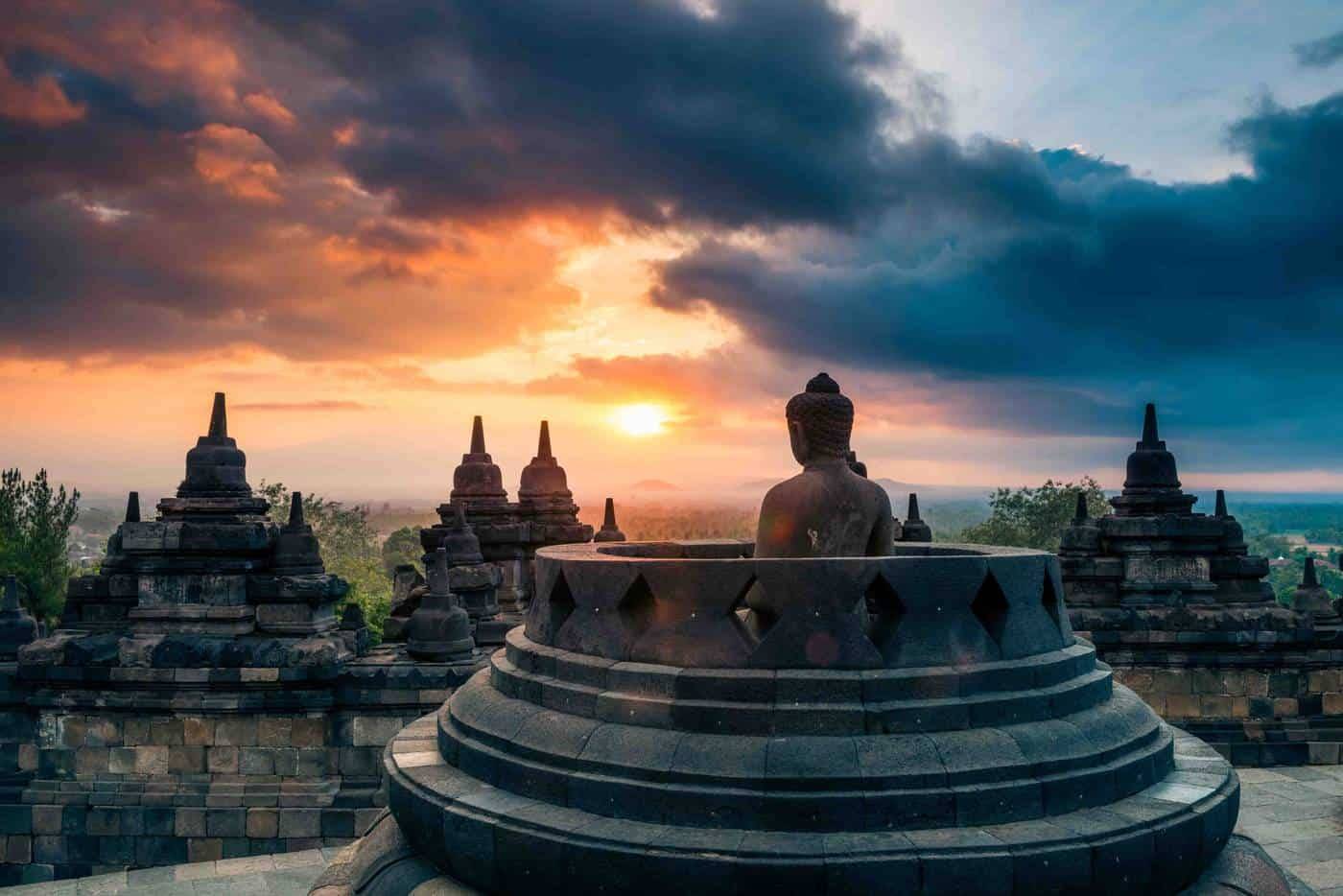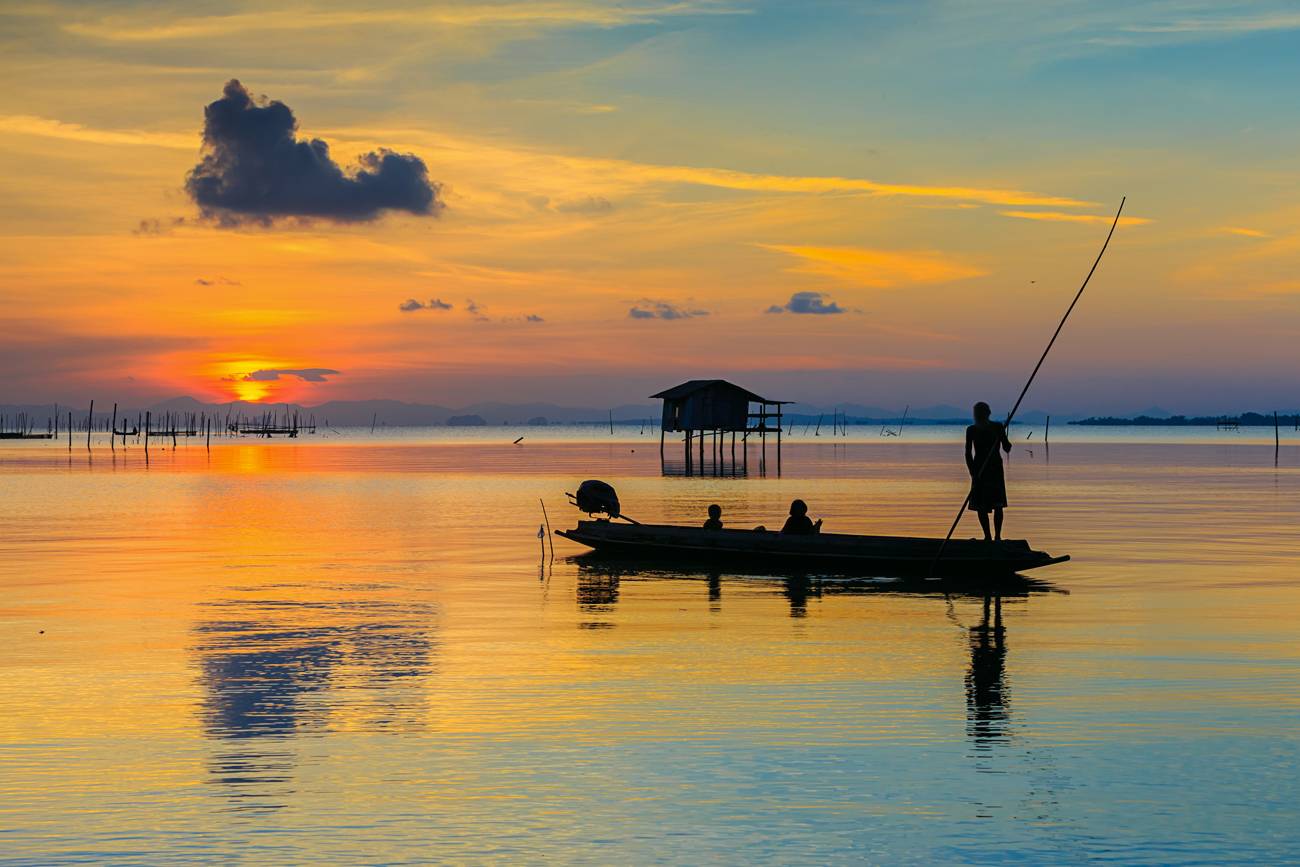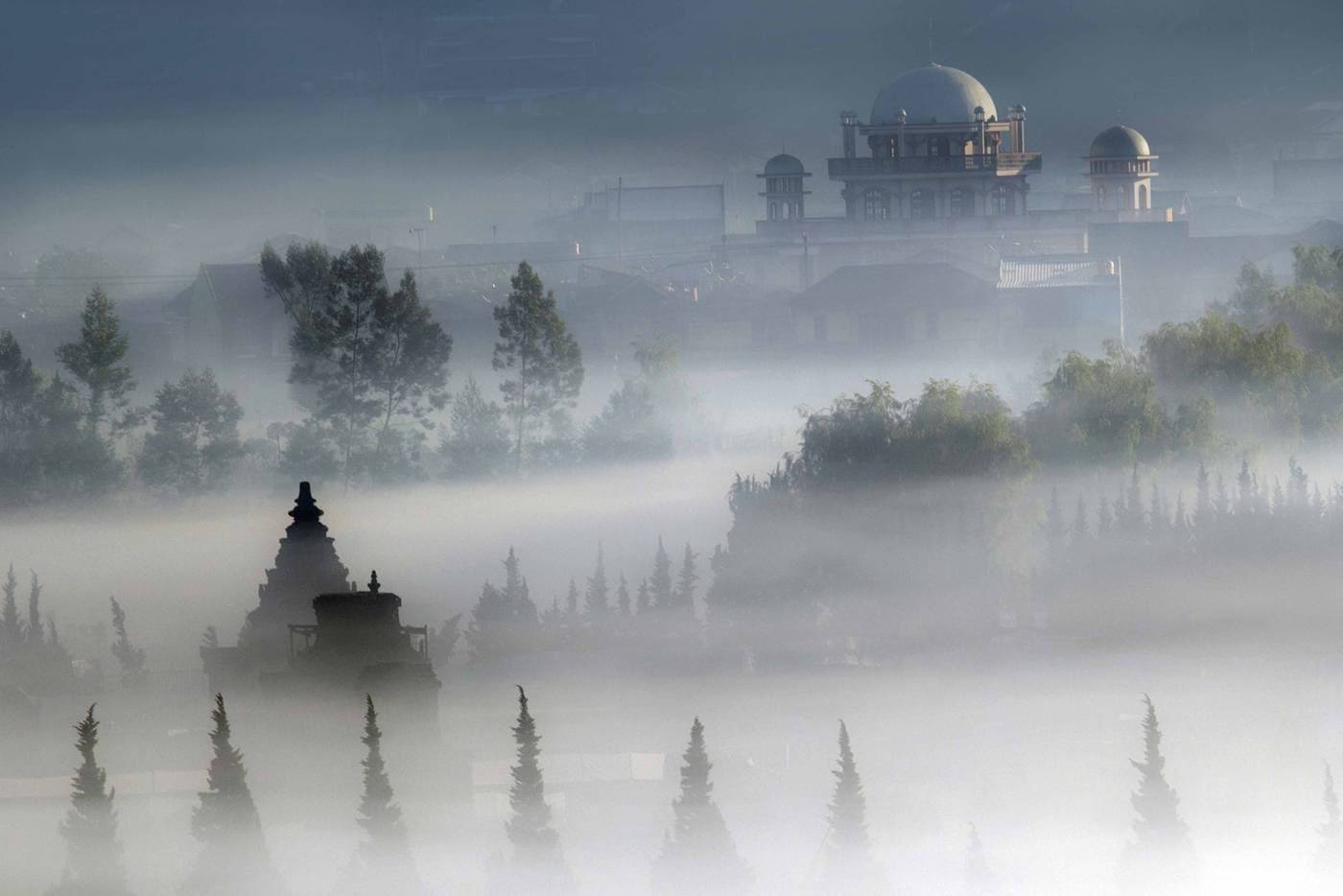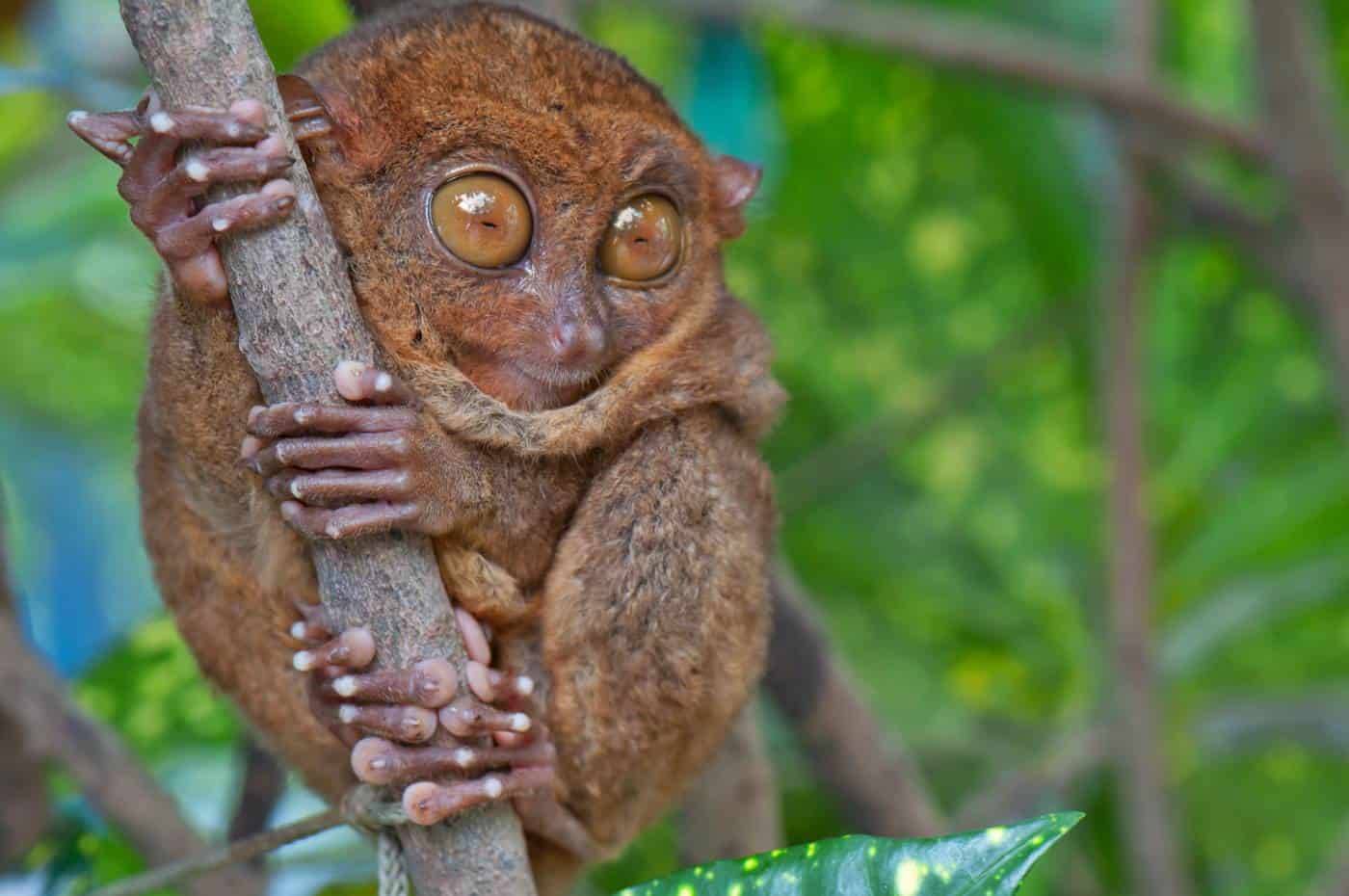
CENTRAL SULAWESI – EMBRACED BY RARITIES
These forgotten regions of Sulawesi are, in fact, some of the most fascinating on the island. From the mysterious Lore Lindu National Park and its bizarre wildlife to the nomadic tribes of Tua Taa Waana and the last sea gipsies in the world in the Togean Islands, the Central Sulawesi has more than enough to offer, provided that you like it off the beaten track.
PALU
Busy, noisy and crowded – the capital of Central Sulawesi is not exactly a favourite destination, but it has a domestic airport. That is why the city of Palu cannot be skipped. Travellers heading to Borneo by the Pelni ship will need to spend here a day or two anyway, and those visiting the highlight of Sulawesi`s heart – Lore Lindu, they will find it a good base for their trip.
Perhaps searching around the coastal area of Tanjung Karang and Dongalla might change one`s impressions. At last, it is one of the driest regions of Indonesia, and the beach can be enjoyed at any time.
LORE LINDU NATIONAL PARK
Situated mere 3 hours drive from Palu, the foremost archaeological site of Sulawesi is a great puzzle. More than 400 granite megalithic rocks have been proudly standing over the verdant hills of Lore Lindu for about 5000 years.
Some structures look like just like giant pots and plates, resembling the Plain of Jars in Laos, while others were carved to represent human forms. They vary in size from 5 centimetres to nearly 5 meters, and various studies have dated the carvings from between 3000 BC to 1300AD. No one really knows what the original purpose of these megaliths was, and so, the site remains an archaeological mystery.
Apart from being a significant historical location, the national park is covered with both lowland tropical and alpine forests (reaching up to 2,610 m), that provides habitat to a huge variety of fauna, including rare butterflies, tarsiers, maleo, primates on the verge of extinction and 77 exotic bird species found nowhere else on earth. Obviously, eco-tourism is in the spotlight.
The national park is defined by 4 major areas: Palolo Valley, Napu Valley, Bada Valley and Kulawi Valley. The valleys were once lakes, and today, they are filled with sediment. Lake Lindu is the last remaining lake, and it can be easily explored.
The gateways to the reserve are Tentena (the eastern access) and Kamarora (the northern access).
Camping, trekking, hiking and rafting are the most popular activities, and even though the terrain is pretty tough, the vistas are terrific. Lore Lindu`s equatorial setting makes it extremely hot and humid in the daytime but very cold in the night, particularly if hiking in the highlands (2600 m).
The risk of getting lost here is pretty high, hence a local guide should be hired for your own safety. Bada Valley is best for megaliths and trekking, Lariang River offers great rafting, and Gintu Village is known for eco-tourism.
TO GET THERE: from Palu to Lore Lindu (2 hours by tourist jeep) and there are daily jeeps departing to the national park from Tentena to Lore Lindu as well.
POSO LAKE
Danau Poso is one of the deepest lakes in Indonesia, and its depths teems with threatened fish, snails and crabs. The lake`s shoreline is fringed by villages, and stilt houses and most of them make their living fishing.
Pendolo – a town at the southern end of the lake, and Tentena at its north are the major destinations for every visitor. The nearby hinterlands are rich in exotic flora – orchids and cloves in particular, and odd wildlife, such as anoa (dwarf buffalo) and babirusa (literally, pig-deer) and ruminant pig.
Poso Lake is a Sulawesian version of the Toba Lake in Sumatra, and it has equally spellbinding character.
TO GET THERE: from Palu to Poso Lake/Tantena (7 hours by bus or a taxi). If travelling overland from Tana Toraja there are daily buses from Rantepao to Tentena (12 hrs)
TENTENA
Tentena, sitting on the northern shores of Poso Lake, is the southern gateway to the Lore Lindu National Park.
It is a peaceful, quaint place becoming increasingly popular for the annual Festival of Danau Poso. That is the only time of a year when the serenity is broken; each August villagers from far afield gather to enjoy a dazzling celebration of their culture and tradition. Music, dancing and sports and competitions are the main affairs, topped up with a grand feast, of course.
If you cannot make it for the fiesta, don`t worry – Tentena is worth stopping by at any other time of a year. With colourful markets, friendly warungs and homestays, verdant rice fields and lush mountains in the background, Tentena was blessed with the pretty picturesque scenery.
The best way to inspect the area is hiring a scooter and touring around the lake. Saluopa Falls, Siuri Beach and lovely eco-lodges and numerous walking tracks can be found on the way.
Once taken a close look at Poso Lake and Tentena, there are two directions to choose from: heading to the Lore Lindu National Park (if coming from Tana Toraja) or setting out on a long odyssey to the east – Togian Islands.
TOGEAN ISLANDS
Sitting right on the equator, 56 paradisiacal isles and 37 stilt villages are scattered across the azure, brilliant waters of the Molluca Sea. This little tropical wonderland is home to Bajau Laut people, known as the sea gipsies, and one of the most attractive diving destinations in Indonesia.
Togean Islands are sheltered by the Gulf of Tomini, which brings calm, shallow waters, and although the journey takes certain endeavours, it truly is worth it.
The remoteness of the archipelago helps the sea nomads to preserve their traditional lifestyle and allows the islands to remain untouched. This is a path less trodden, visited by adventurous scuba divers and independent travellers (the main access is from Ampana).
MOROWALI NATURE RESERVE
The final destination and the end of the big expedition through Central Sulawesi leads to the Morowali Nature Reserve. You will need lots of spare time, though to get here and the journey will not be effortless.
This vast coastal area features mangrove forest, lowland alluvial forest, moss forest as well as montane forests reaching up to 2,410 m. Botanists and nature lovers will surely fall in love with this reserve for its fauna and flora is extraordinary. You will find anoa, babirusa, monkey, rat-pack of bears, boars, deer, grey fox, and rare types of bats, butterflies, tarsiers, apes, reptiles and gorgeous birds.
TUA TAA WANA TRIBES
Curious anthropologists can try to find the indigenous Tua Taa Wana tribes who are nomadic forest people and brilliant boar, deer and babirusa hunters.
With the help of a local guide, you will be able to visit some of the jungle villages, including Merangka, Posangke, Kayupoli, Uwewaju, Ratobae, Sangkoe and Langada. Not many locals speak English, and it might be a real challenge to travel in these territories without the local company.
Visitors are recommended to seek for some advice at their guesthouse in Kolonodale or Morowali. Be aware that Morowali Regency is one of the most isolated parts of Sulawesi with limited facilities and wild environs.
TO GET THERE: if travelling from Poso Lake take a bus to Kolonodale (7 hrs min) and take a speedboat to Morowali Nature Reserve (30 min). Otherwise, fly to Luwuk and go straight to the reserve by a speedboat (4 hrs).
DID YOU KNOW?
Sulawesi is home to 6 extremely rare and endangered species of animals that can be seen nowhere else on earth. For instance, Anoa (something between water buffalo, deer and goat, only 5000 anoas are still in existence), Babirusa (wild deer-pig), Maleo (a peculiar flyless bird that looks more like an exotic cockerel, 10 000 animals left), Kuskus (a marsupial resembling a small bear and it prefers a lazy lifestyle similar to koala), Celebes Black Macaque (the primate is close to extinction due to illegal hunting, sadly it is a very popular bushmeat for the local people, 4000 animals left) and Tarsius Tarsier (one of the world`s smallest primates).
ESSENTIAL EXPERIENCES IN CENTRAL SULAWESI
Palu – spend a couple of days in the capital to prepare for the trip, take a swim at the Tanjung Karang Beach
Bada Valley – search around the foremost archaeological site of Sulawesi and find some of the 400 granite megalithic rocks have been standing in the national park more than 5000 years
Lore Lindu National Park – nature lovers will love meeting some of the rarest species on earth, including tarsiers, maleo, anoa, babirusa, kus-kus, Celebes Black macaque, exotic birds and butterflies, and the largest flower in the world – Rafflesia Arnoldii
Lake Poso – hire a scooter and ride around the lake, stopping by the fisherman villages, beaches and waterfalls. Take a boat tour to the stilt villages from Tentena
Tentena – take a stroll down Tentena village and if you happen to travel in August make sure you visit the Festival of Danau Poso
Togean Islands – take a speedboat from Ampana to the famous Togean Islands (Wakai/Bomba) to pay a visit to the Bajo Laut sea gipsy villages
Morowali Nature Reserve – travel to the isolated coastal area of Tua Taa Wana tribes who are nomadic forest people and brilliant boar, deer and babirusa hunters (NOTE this is a real off the beaten track adventure and you will need to hire a local guide in Kolondale to take you to the jungle)
NOTE
Although Central Sulawesi generally seems calm and safe to travel some tensions, remain in certain areas, and it is important to check the current situation before travelling. Also, it is recommended to avoid the city of Poso for frequent turmoil and heavy military presence.
WHEN TO TRAVEL
Due to heavy rainfalls during the wet season (Nov-Feb) many areas become flooded and inaccessible. Hence, the best time to visit is the dry season (June-September).
HOW TO GET THERE
Fly to Palu (for Lake Poso, Tentena and Lore Lindu)
Fly to Luwuk (for the Togian Islands and Morowali)
For all international flights visit www.momondo.com or www.skyscanner.com
For all domestic flights check out Lion Air, Garuda Indonesia or Sriwijaya Air


